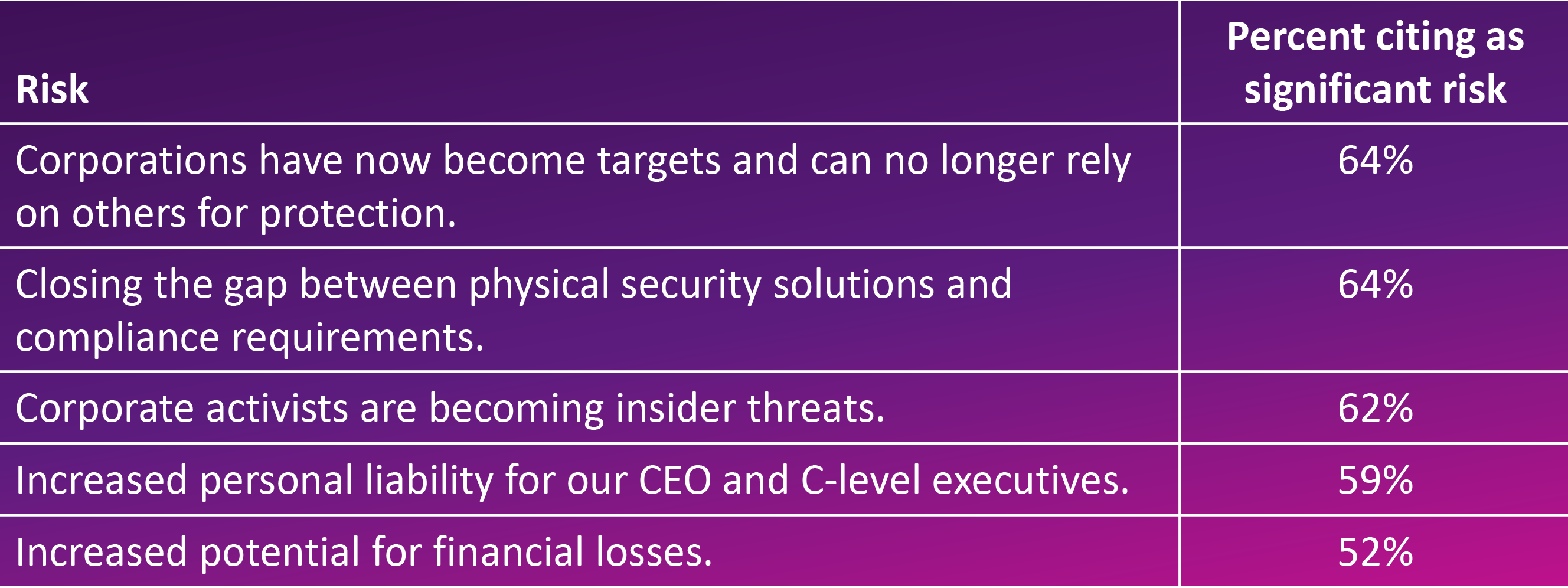Research Highlights Growing Physical Security Threats
If you think the number and potential severity of the threats facing your organization are increasing, you are not alone. That’s the main finding from the Ontic 2022 State of Protective Intelligence Report.
Ontic surveyed chief security officers, chief legal officers, chief compliance officers, general counsels, and physical security directors of U.S. companies with more than 5,000 employees in November and December 2021. They found that almost 9 in 10 agreed with the statement, “My company is experiencing a dramatic increase in physical threat activity that I anticipate will only grow in 2022 as compared to the beginning of 2021.”
In addition, 85 percent agreed with the statement, “As compared to the beginning of 2021, the physical threat landscape has dramatically changed and expanded, which has created an exponential increase in data and pre-incident indicators that I expect to be unmanageable in 2022.” And finally, 83 percent agreed with the statement, “Unmanaged physical threats are increasing corporate risk, are having a financially crippling effect, and are negatively impacting business continuity at my company.”
Understandably, this has security, legal, and compliance professionals on edge. Eighty-four percent said they feel less prepared to handle physical security in 2022 than in 2021. A telling result is that 42 percent of respondents said they anticipated missing more than 50 percent of physical security incidents that threaten the organization in the year ahead. Only 26 percent said the same thing in a comparable study from the first half of 2021, showing the ominous feeling is getting worse.

“The physical threat landscape has significantly changed and expanded, a majority of respondents agreed, which has created an exponential increase in data and pre-incident indicators that will only grow and be unmanageable in 2022,” said Fred Burton, executive director of the Ontic Center for Protective Intelligence, in a press release. “But when it comes to approaches to employee preparedness to address threats and workplace violence, just over half cited their company believes training employees so they are better prepared for potential workplace violence will create a culture of fear, wants to take a reactive strategy and does not see the ultimate risk to business continuity by inaction.”
The top issues making an impact on physical security strategy were “corporations have become targets and can no longer rely on others for protection” and “closing the gap between physical security and compliance requirements,” each of which were cited by nearly two-thirds of participants. Those challenges were followed closely by activists becoming insider threats, personal lability for CEOs, and increased potential for financial losses.

The study also highlights the challenges security professionals face as supply chain issues affect companies, as well as the ongoing evolution of challenges related to the worldwide COVID-19 pandemic. Full results are available from Ontic here.
